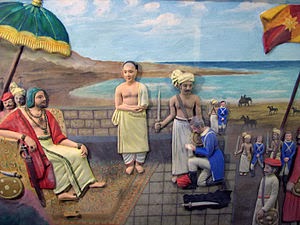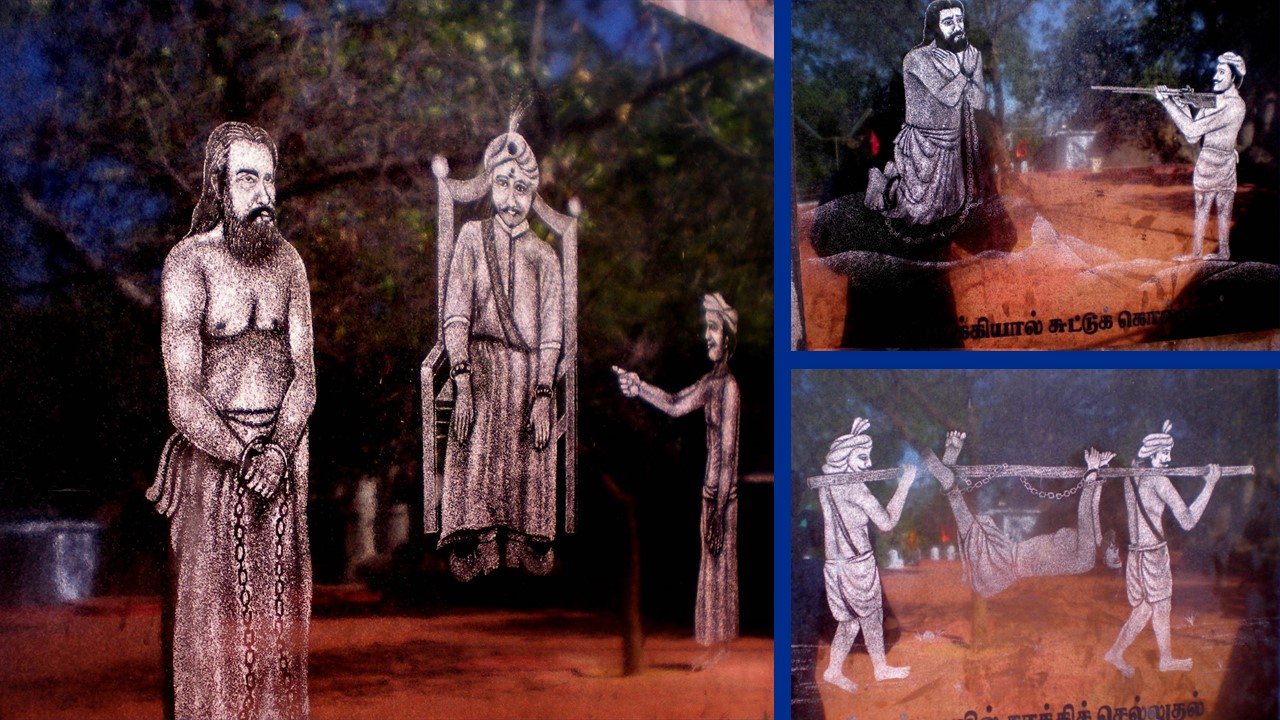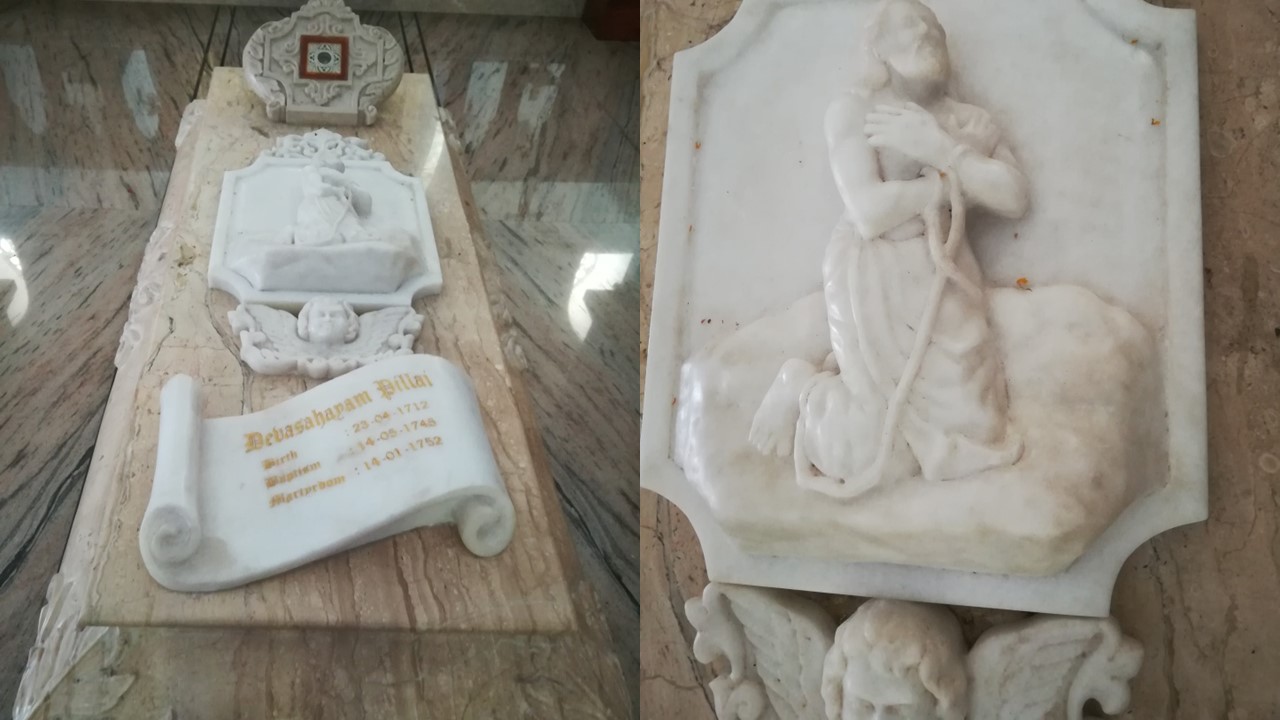"He became a Christian, regardless of caste difference, embracing everyone as beloved brothers" (Card. Angelo Amato)
Lazarus Devasahayam Pillai, the first Indian lay saint and a martyr was canonised today by the Holy Father Pope Francis.
Devasahayam, named Nilakandan was born in April 12, 1712, in the small village of Nattalam, in the southernmost region of the kingdom of Travancore, South India, into a typical Hindu family.
As a member of the dominant upper caste Nair, he was called 'pillai'. Belonging to a higher caste, he was educated by tutors and his clan members worked as soldiers in the king's service. In his youth he practiced traditional martial arts while also studying and learning many languages.
He began his military career with the king. Thanks to his great intelligence and his talents, he was soon appointed high officer of the king's palace and became minister of the kingdom and official of the royal palace in charge of the treasury and royal finances.
 The king of Travancore, Marthandavarma, appointed the Dutch army general De Lannoy for modernizing his army and building fortifications, such as Udayagiri. Palace officer Nilakandan, minister responsible for the kingdom's finances, became close friends with De Lannoy.
The king of Travancore, Marthandavarma, appointed the Dutch army general De Lannoy for modernizing his army and building fortifications, such as Udayagiri. Palace officer Nilakandan, minister responsible for the kingdom's finances, became close friends with De Lannoy.
The continuous misfortunes in Nilakandan's family became an occasion for sharing suffering with De Lannoy. The latter tried to console him by telling him the stories of the suffering of Job, a righteous man, described in the Bible. Nilakandan felt drawn to Christianity and expressed a burning desire to believe in Jesus and to become a Christian.
De Lannoy, knowing very well the harmful consequences of adhering to the Gospel, hesitated to help his friend in his desire to embrace the Christian faith. In the end, however, due to constant insistence, De Lannoy decided to help him and sent him to Don Giovanni Battista Buttari, a Jesuit missionary, a priest at Vadakkankulam, outside the territory of the kingdom of Travancore, in order to avoid the hostility of King Marthandavarma.
On May 14, 1745 Fr Buttari baptized Nilakandan with the new name of Devasahayam, corresponding to the biblical Lazarus, which means "help of God". His wife Bargaviyamma also received the sacrament of Baptism, with the new name of Gnanappoo, that is, Teresa.
The conversion of a king's minister was seen as a betrayal and a danger to the solidity of the Indian Hindu state. The brahmins began to make false accusations against Devasahayam with the king.
His refusal to worship the Hindu Gods as well as his friendship with the untouchables of the lower classes angered the officers. Following repeated and unsuccessful attempts to make him renounce the Christian faith, the king ordered that he be publicly tortured for a long time, as a warning to those who thought of converting to Catholicism.
Palace officers and soldiers implemented a series of cruel methods to torture Devasahayam. He was humiliatedly seated on a buffalo and offered ridiculous wreaths of flowers. He was regularly beaten in public with sticks and thorns. They put chili powder on his wounds to increase the pain and suffering. They forced him to be among harmful insects.

He was forced to walk for many kilometers in the scorching sun, with his hands and feet chained. Near a small rock in Puliyoorkurichy, he was very thirsty, but the soldiers refused to give him a drop of water; he fell on his knees on the rock and prayed: the water that gushed from the rock quenched his thirst. They tied him tightly to a tree, thus preventing him from sitting or lying down. Outdoors, under the scorching sun, rain or wind, he went hungry for seven months.
On January 14, 1752, the officers received a special order from the king to kill him in secret. The soldiers carried him on their shoulders, took him to a mount in the Aralvaimozhy forest. He was shot three times and Devasahayam fell on the rock shouting: "Jesus, save me!" Then to make sure he died, they fired two more shots. The torturers threw him into the forest, in order to destroy any evidence of his killing, so that his corpse would be devoured by the beasts.
However, after five days, the Catholics who lived nearby learned of his killing, collected his mortal remains and reverently buried the departed holy man in the Church of St. Francis Xavier in Kottar (the current cathedral of the Diocese of Kottar), in the state of Tamilnadu.

By virtue of the fame of martyrdom of the Servant of God Devasahayam, widespread in India, his Cause of beatification began.
The Holy Father Benedict XVI authorized the promulgation of the super martyrio decree on June 28, 2012 and, on the following December 2, the beatification ceremony took place in the city of Nagercoil (diocese of Kottar), with great participation of the people.
The Special Congress of the Theological Consultors of the Congregation for the Causes of Saints was held on 5 December 2019, with a positive outcome. The same opinion was expressed by the Cardinals and Bishops, in the Ordinary Session of 18 February 2020.
His Holiness Francis has authorized the Congregation for the Causes of Saints to promulgate the super miraculous decree of 21 February 2020.
The Canonization of Lazarus Devasahayam marks an important chapter in the history of the Catholic Church in India.
-With inputs from Congregation for the Canonization of Saints